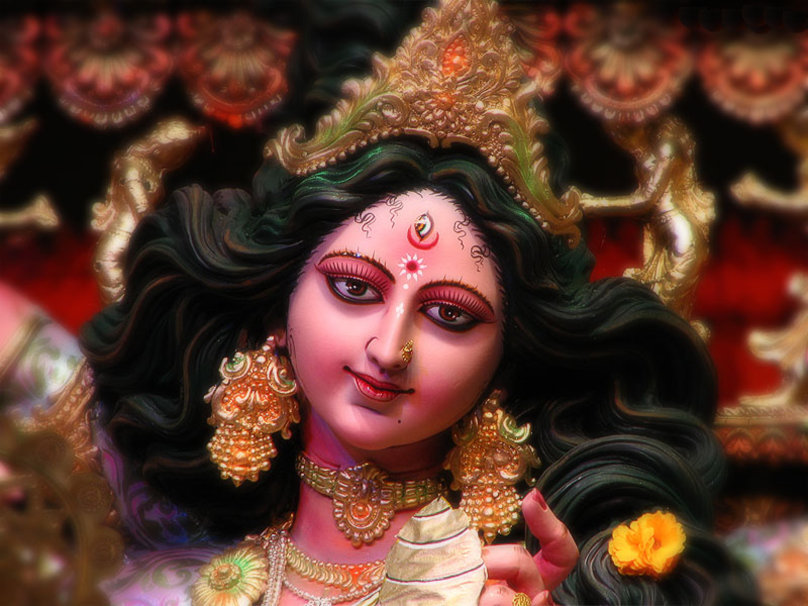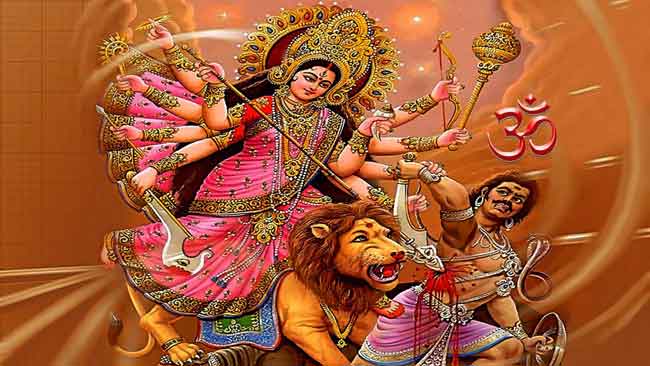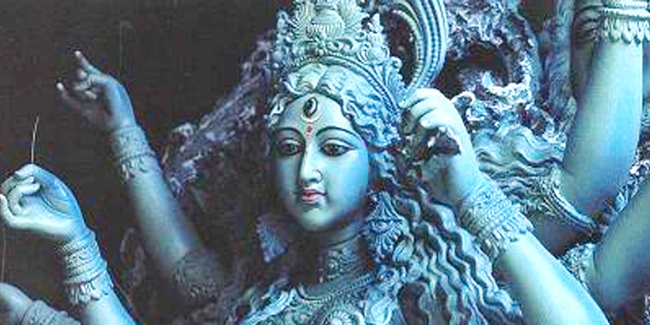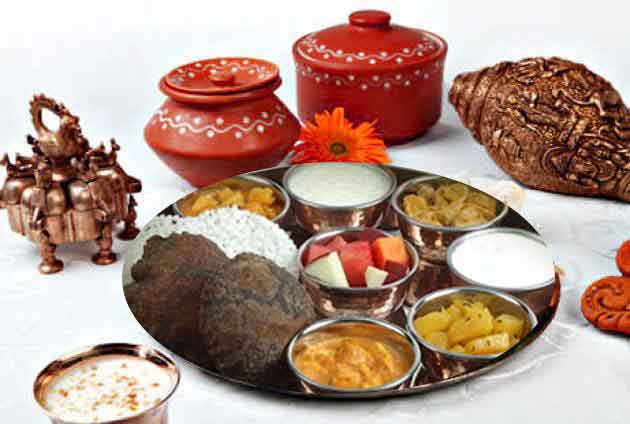Navratri is one of the biggest auspicious Hindu festival celebrated by keeping fasts for nine days to honor Goddess Durga – the most powerful female god. The word Navratri is a union of two Sanskrit words, nav means new and ratri means night. The goddess of power, Durga is worshiped during these nine sacred days. Durga is an epitome of fear, motherly love, care and beauty. The full story of the incarnation of various manifestations of the Goddess is detailed in the Markandeya Purana.
Navratris are celebrated differently in different parts of India. In Gujarat it is celebrated with dandiya and dancing for nine days.
The goddess loves and takes care of its children who follow her and also those who do not believe in her. If you offer your prayers to her with clean and pure heart, she will be happy at you and remove all the black shadow of bad luck and failures from your life.
Significance of Navratri
It is believed that whenever the tamasik, cruel people overpower the innocent people and trouble them; goddess takes incarnation in some form to reinstate Righteousness. This is believed that during the auspicious period, the goddess becomes a thousand times more powerful than she is any other day.
Navratris occur twice a year, the beginning of summer and the beginning of winter, two most important times of season change in a year.
The importance of these nine days is mentioned in Hindus holy books also, like in tenth Mandal of the holy Rigveda, the sadhnas of Shakti are written in detail and also “Devi Sukta” and “Usha Sukta” is dedicated to the Sadhana of Shakti while in Samveda, “Ratri Sukta” reads all about Devi Shakti.
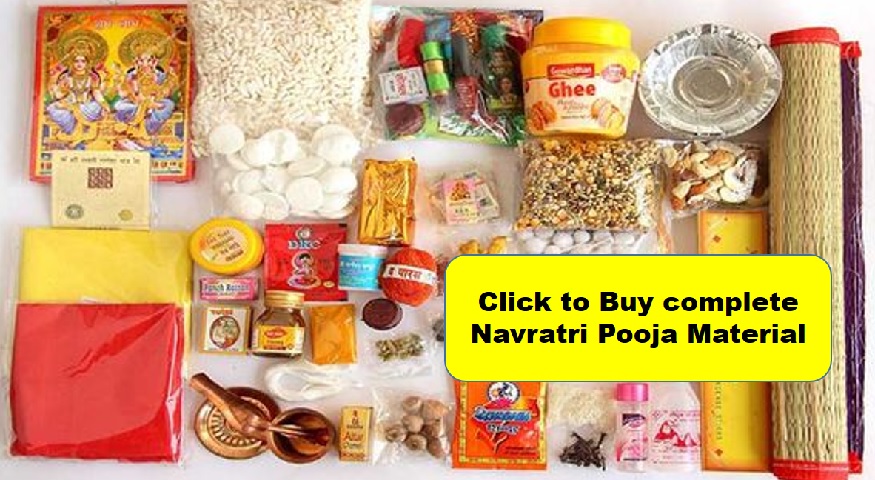
In the Markandey Purana, Rishi Markandey has told that it is Shailputri who was the first incarnation of Shakti, so she is worshiped on the very first day of navratris. The nine manifestations of goddess Durga worshiped during nine days, are Brahmcharñi, Chandraghanta, Kushmanda, Skandamata, Katyayani, Kalratri, Mahagauri and Siddhidatri, they are worshipped as “Nav-Durga”.
Since the Vedic Age of the Rishis, the devotional practices recommended during Navratri are primarily those of Gayatri Anushthana.
Why do we Worship the Mother Goddess in Navratris?
Many people think “Why mother is worshiped and not a father?”. Actually, Hinduism is the only religion in the world, which gives so much importance to the mother aspect of God because we believe that mother is the creative aspect of the absolute. We believe that the cosmic energy of god and his sensitive nature along with a powerful form of protecting kids, can best be depicted as the motherhood aspect of God.
Though Navratri lasts for nine consecutive days but every day has its own significance and different manifestation of Goddess Durga is worshiped accordingly.
How to Perform Navratri Puja?
- First of all, clean the place of worship and construct a holy fireplace with an idol of goddess with eight arms placed on it. A pot called “ghat” filled with water is placed along with “Navarna Yantra there.
- Next step is Ghatasthapana ritual which is performed by filling sand in a square base mixed with food grains. Seven types of food grains can be used which are wheat, lentils, barley, wheat, sesame seeds, grams etc.
- The square base is then decorated with water, flowers, gandh, betel nut, gems and coins.
- If one is not aware with the proper rituals, then should recite mantra and chant god’s name, Goddess sees only the inner feelings not the expenses you do in the name of her.
- Unmarried girl, Kumarika (virgin) is worshiped for nine consecutive days and is offered meals, money, bangles etc. as per your choice.
- Many people light akhand deep in the temple of their house for nine days, pour ghee daily and take care of it so that it does not blow off with air and in case if it blows out because of the wind or due to lack of oil or carbon formation etc. those causes should be corrected and the lamp should be lit again.
- People are restricted to shave and wearing footwear during Navratri, and one should use floor for sleeping.
- Morning meditation with the rising sun and reciting of goddess mantras along with the adoption of certain self-controlled disciples is considered very well and fruits bearing.
- On the day of breaking fast; which is the ninth day or some people do on the eighth days of Navratri, Prasad of halwa and poori is made along with other dishes as per your choice and the pot is immersed in running water along with the germinated seeds.
- A havan is performed daily or at the last day of Navratri to symbolize its completion.
- According to once health and daily routine, fasting can be done by taking fruits and milk once or twice a day.
- Keep negative thoughts out of your mind and do not think evil of anyone. Give special attention to the cleanliness of the body, outside and inside.
What Foods we can have During Navratri?
- Kaju Katli
Many people have doubt and ask “Can we eat Kaju katli in fasts?”. Actually, it is made up of cashew nuts, milk, dry fruits, sugar and silver vark on it. If it is purchased from market then the possibility is that it can have glucose syrup used in replacement of sugar to sweeten it. So, it is advisable to eat kaju katli on if it is made at home and no glucose is used as glucose is made up of rice, barley, wheat or other grains which are restricted to have in navratri fast. - Arbi Cutlet
- Fruit Raita
- Til Khoya Ladoo
- Sabudana ki Khichdi
- Sabudana ki Kheer
- Singhare ki poori and vrat ke aloo
- Marwari dum aloo
- Pumpkin ki sabji
- Kuttu ki roti or pakode
- Kuttu ki kadi
